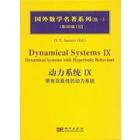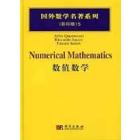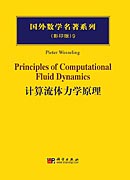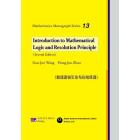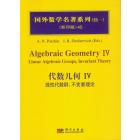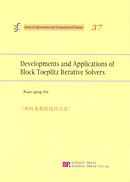计算神经系统科学是一个正在兴起的研究领域,近年来已经成为许多国家政府资助的研究方向,吸引着许多青年研究人员。本书分析了视觉运动感知的计算问题、模拟网络的优化方法等,最有特色处在于从大规模集成电路实现的解度、低成本等优势,进行模拟的并行视觉运动感知。
本书的专业很强,所涉及的问题非常前沿,属于交叉学科,极具发展潜力,其权威性不言而喻。对于从事神经网络、人工智能、控制理论的等领域的研究者,本书有很大的参考价值。在我国,这方面的研究还处于起步阶段,本书提出的视觉运动集成电路实现方法无疑是一种崭新的思路。
样章试读
目录
- Foreword
Preface
1 Introduction
1.1 Artificial Autonomous Systems
1.2 Neural Computation and Analog Integrated Circuits
2 Visual Motion Perception
2.1 Image Brightness
2.2 Correspondence Problem
2.3 Optical Flow
2.4 Matching Models
2.4.1 Explicit matching
2.4.2 Implicit matching
2.5 Flow Models
2.5.1 Global motion
2.5.2 Local motion
2.5.3 Perceptual bias
2.6 Outline for a Visual Motion Perception System
2.7 Review of aVLSI Implementations
3 Optimization Networks
3.1 Associative Memory and Optimization
3.2 Constraint Satisfaction Problems
3.3 Winner-takes-all Networks
3.3.1 Network architecture
3.3.2 Global convergence and gain
3.4 Resistive Network
4 Visual Motion Perception Networks
4.1 Model for Optical Flow Estimation
4.1.1 Well-posed optimization problem
4.1.2 Mechanical equivalent
4.1.3 Smoothness and sparse data
4.1.4 Probabilistic formulation
4.2 Network Architecture
4.2.1 Non-stationary optimization
4.2.2 Network conductances
4.3 Simulation Results for Natural Image Sequences
4.4 Passive Non-linear Network Conductances
4.5 Extended Recurrent Network Architectures
4.5.1 Motion segmentation
4.5.2 Attention and motion selection
4.6 Remarks
5 Analog VLSI Implementation
5.1 Implementation Substrate
5.2 Phototransduction
5.2.1 Logarithmic adaptive photoreceptor
5.2.2 Robust brightness constancy constraint
5.3 Extraction of the Spatio-temporal Brightness Gradients
5.3.1 Temporal derivative circuits
5.3.2 Spatial sampling
5.4 Single Optical Flow Unit
5.4.1 Wide-linear-range multiplier
5.4.2 Effective bias conductance
5.4.3 Implementation of the smoothness constraint
5.5 Layout
6 Smooth Optical Flow Chip
6.1 Response Characteristics
6.1.1 Speed tuning
6.1.2 Contrast dependence
6.1.3 Spatial frequency tuning
6.1.4 Orientation tuning
6.2 Intersection-of-constraints Solution
6.3 Flow Field Estimation
6.4 Device Mismatch
6.4.1 Gradient offsets
6.4.2 Variations across the array
6.5 Processing Speed
6.6 Applications
6.6.1 Sensor modules for robotic applications
6.6.2 Human-machine interface
7 Extended Network Implementations
7.1 Motion Segmentation Chip
7.1.1 Schematics of the motion segmentation pixel
7.1.2 Experiments and results
7.2 Motion Selection Chip
7.2.1 Pixel schematics
7.2.2 Non-linear diffusion length
7.2.3 Experiments and results
8 Comparison to Human Motion Vision
8.1 Human vs. Chip Perception
8.1.1 Contrast-dependent speed perception
8.1.2 Bias on perceived direction of motion
8.1.3 Perceptual dynamics
8.2 Computational Architecture
8.3 Remarks
Appendix
A Variational Calculus
B Simulation Methods
C Transistors and Basic Circuits
D Process Parameters and Chips Specifications
References
Index
